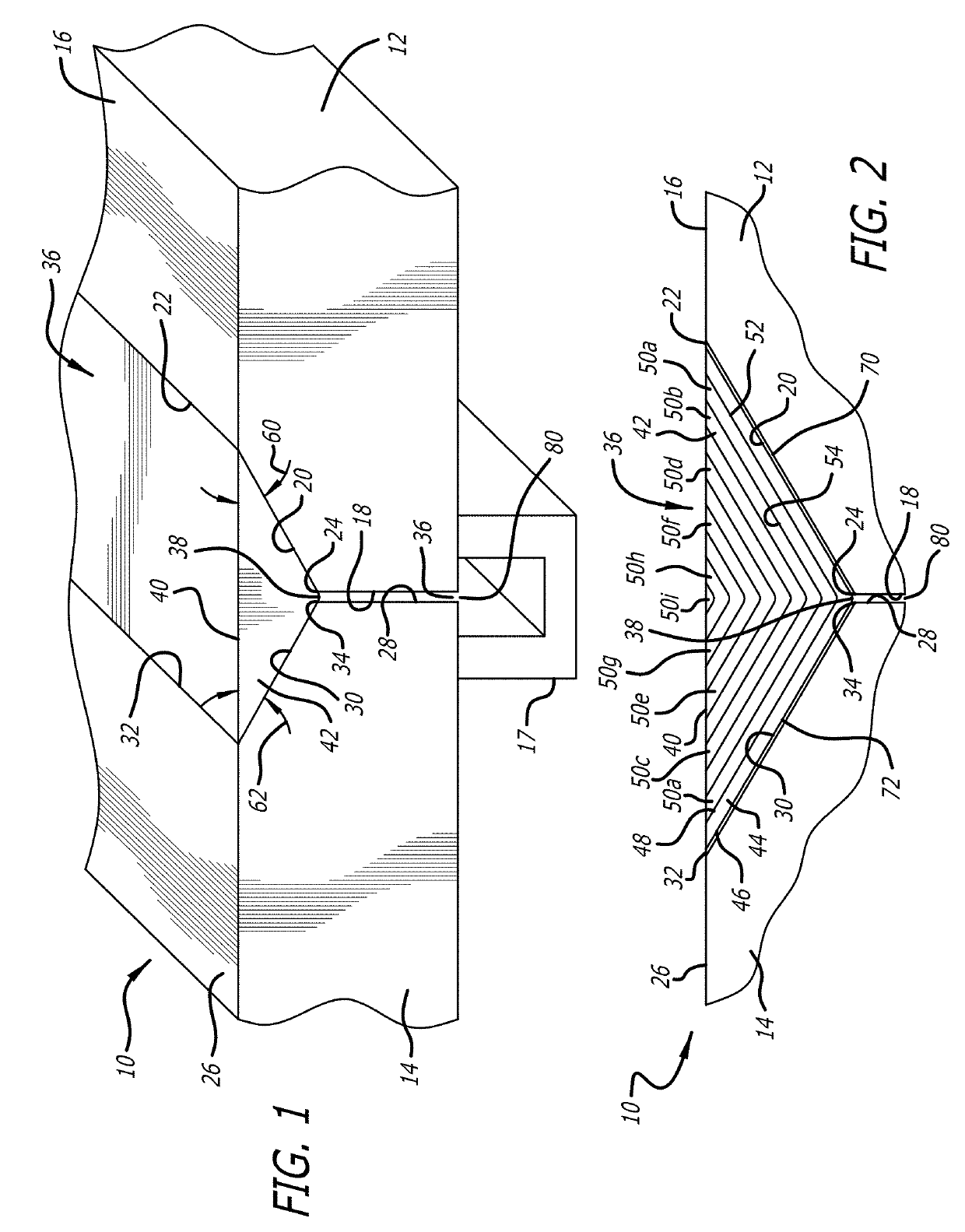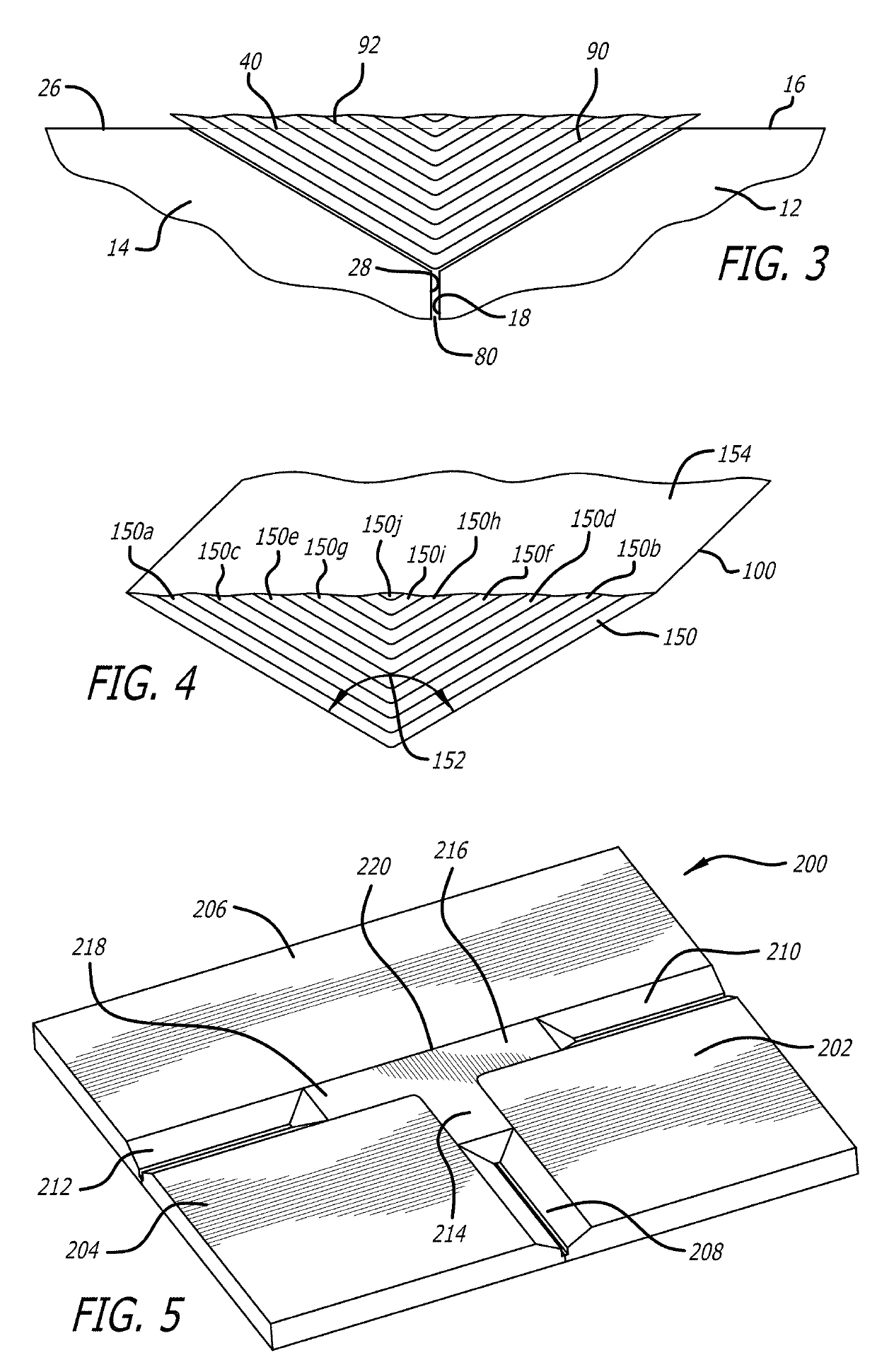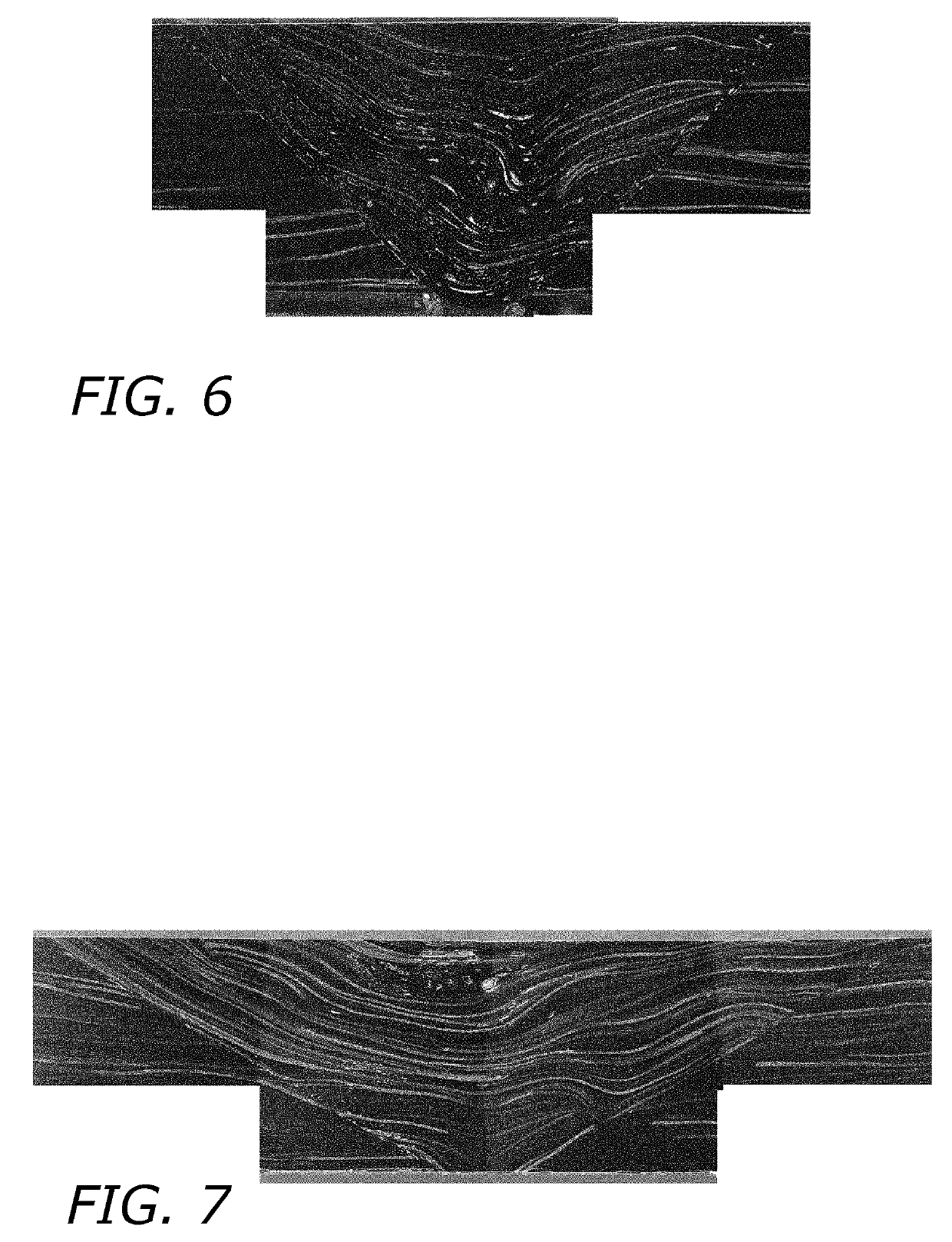Method for seaming multi-sectional composite tooling
a composite tooling and multi-section technology, applied in the field of multi-sectional tools, can solve the problems of increasing the cycle time of composite tooling molding, increasing the cost of steel alloy tooling, and unsuitable unidirectional tape for composite tooling use, so as to achieve the effect of eliminating surface imperfections and ensuring the same durability
- Summary
- Abstract
- Description
- Claims
- Application Information
AI Technical Summary
Benefits of technology
Problems solved by technology
Method used
Image
Examples
Embodiment Construction
[0032]A portion of an exemplary multi-sectional composite tooling in accordance with the present invention is shown at 10 in FIGS. 1 and 2. The multi-sectional tooling is intended for use in fabricating large composite parts or structures in accordance with known autoclave curing processes where service temperatures are typically between 170° C. and 260° C. and where the tooling surfaces are exposed to pressures of between 45 psi and 125 psi. However, if desired, the tooling may be used in other molding processes where it is not necessary to heat the material being molded to such high temperatures and / or where high pressure is not used in the molding process.
[0033]Exemplary large composite parts or structures that can be molded using the multi-sectional tooling includes aircraft wings, fuselages, horizontal stabilizer spar tools, wing spar tools and empennage tools. The overall size of the molding surface provided by the multi-sectional tooling can range from a few square meters to ...
PUM
| Property | Measurement | Unit |
|---|---|---|
| angle | aaaaa | aaaaa |
| angle | aaaaa | aaaaa |
| angle | aaaaa | aaaaa |
Abstract
Description
Claims
Application Information
 Login to View More
Login to View More - R&D
- Intellectual Property
- Life Sciences
- Materials
- Tech Scout
- Unparalleled Data Quality
- Higher Quality Content
- 60% Fewer Hallucinations
Browse by: Latest US Patents, China's latest patents, Technical Efficacy Thesaurus, Application Domain, Technology Topic, Popular Technical Reports.
© 2025 PatSnap. All rights reserved.Legal|Privacy policy|Modern Slavery Act Transparency Statement|Sitemap|About US| Contact US: help@patsnap.com



